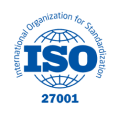

Strengthen private and corporate cybersecurity through testing
Nowadays, the protection of our private and business life is a serious challenge, and the security of our data requires constant attention. According to surveys, children are also starting to use the Internet earlier and earlier - even from the age of 6. We use so many applications, games and programs in our daily lives, which is why protecting our own and our children's digital identities becomes a burning issue. Let's see what methods and tools testing professionals can use to help cybersecurity in mid-2022!
Nowadays, the protection of our private and business life is a serious challenge, and the security of our data requires constant attention. According to surveys, children are also starting to use the Internet earlier and earlier - even from the age of 6. We use so many applications, games and programs in our daily lives, which is why protecting our own and our children's digital identities becomes a burning issue. Let's see what methods and tools testing professionals can use to help cybersecurity in mid-2022!
First of all, it is no coincidence that many companies today are engaged in testing different platforms, applications and developments with a focus on security aspects. Security testing is a constantly changing and increasingly serious field of expertise within testing. To help you navigate, the following is a list of related market segments, as well as a brief insight into industry trends.
Well-segmented security testing market
When it comes to security testing, we are basically talking about a very well delimited market based on logical criteria. This specialized IT industry can also be segmented by the type of testing, the method of installation of the tested system, and the end-user area. Here are the top segments in each category.
By type:
- Application security testing
- Network Security Testing
- Device Security Testing
- Engeniería social
- Miscellaneous
By installation method:
- Local
- Cloud-based
By end-user area:
- Healthcare
- IT and Telecommunications
- Retail and e-commerce
- Education
- Miscellaneous
An area that is appreciating, opportunities are constantly expanding
The security testing market was valued at US$5.36 billion in 2020 and is expected to reach US$22.9 billion by 2026. For the 2021-26 forecast period, 27.2 percent annual growth is forecast in the area.
The staggering rate of development is driven by the continued spread of IoT devices on the one hand and BYOD (Bring Your Own Device) on the other, which is clearly stimulating the growth of the security testing market. As IoT-connected devices become an integral part of our daily lives, it is crucial that these devices are tested and minimum security is set.
With the rise of mobile devices and ICT, various government and public companies depend on information infrastructure services. However, this addiction has become a vulnerable factor for many businesses due to growing cybersecurity threats. Most companies (and countries) recognize that cyber threats are one of the most serious economic security challenges they have to face.
It is becoming increasingly clear that traditional methods, such as anti-malware software, are no longer sufficient to keep sensitive information safe. To address this, many advanced companies are strengthening the protection of their sensitive information with their own cybersecurity strategies, and security testing (ST) tools are a priority in the strategy. They are used to identify vulnerabilities in various systems and correct errors.
What does the future hold for security testing?
At this point, it is worth quoting the cybersecurity expert Erik Rutkens, who studied the trends in the field from different perspectives and based on them made an attempt to look ahead to the foreseeable future. This is how the founder and CEO of Qbit Eurofins Cyber Security sees the coming years:
- Digital Transformation and Supply Chain Complexity.Complex investigation and management of the supply chain is also playing an increasing role in security issues. Development models are constantly being renewed, and businesses are increasingly dependent on third-party services. Projections have already predicted that SaaS (software as a service) will dominate 73% of operations in organizations by 2020, and testing will need to be applied with a more holistic approach.
- SecOps and built-in security.Integrated security solutions are becoming an increasingly important requirement both in terms of customer expectations and various quality assurance regulations. System development is carried out in DevOps and then DevSecOps (SecOps) steps accordingly. Gartner predicted years ago that 80% of development teams would essentially use SecOps workflows, so new solutions must be developed to facilitate this.
- Vulnerability Investigations.Criminals are successful if they can get one step ahead of cybersecurity professionals. Testing is therefore vital: no gaps should be left on the systems. With the ever-increasing resources required for prevention, proactive vulnerability testing and penetration testing are becoming a “make-or-break” factor in the industry.
- Conformity testing.In terms of compliance testing, the most significant changes occurred in 2019, largely thanks to the EU's GDPR regulation. The new data regulation is extensive and complex, and has therefore presented organizations and testers with new challenges. Many of the challenges are still looking for ideal solutions.
- Testing the IoT.The Internet of Things is perhaps the area where the security gap is greatest right now. Consumer IoT products are underprotected, and user knowledge about threats is deficient, security awareness is poor. The dangers of IoT devices should not be underestimated, as they can pose serious risks to both end users and the Internet as a whole.
Erik Rutkens puts it simply: safety is a necessity. Good cybersecurity solutions protect customers from data theft, protect hardware and software from critical vulnerabilities; and protect organizations from increasingly stringent regulations impeding their development. The first and most important step in building cybersecurity is proper security testing, and as the demand for security continues to grow, so will the demand for the best testing solutions.
Sources:
- https://kiskoros.hu/biztonsagos-internet-nap-2022-gyermekek-vedelme
- https://www.imarcgroup.com/security-testing-market
- https://www.mordorintelligence.com/industry-reports/global-security-testing-market-industry
- https://www.softwaretestingnews.co.uk/coming-trends-in-security-testing/
- https://www.cypressdatadefense.com/blog/how-to-do-security-testing-manually/
- https://brightsec.com/blog/security-testing
- https://www.getastra.com/blog/security-audit/what-is-security-testing/
Author:
János Szenfner
















